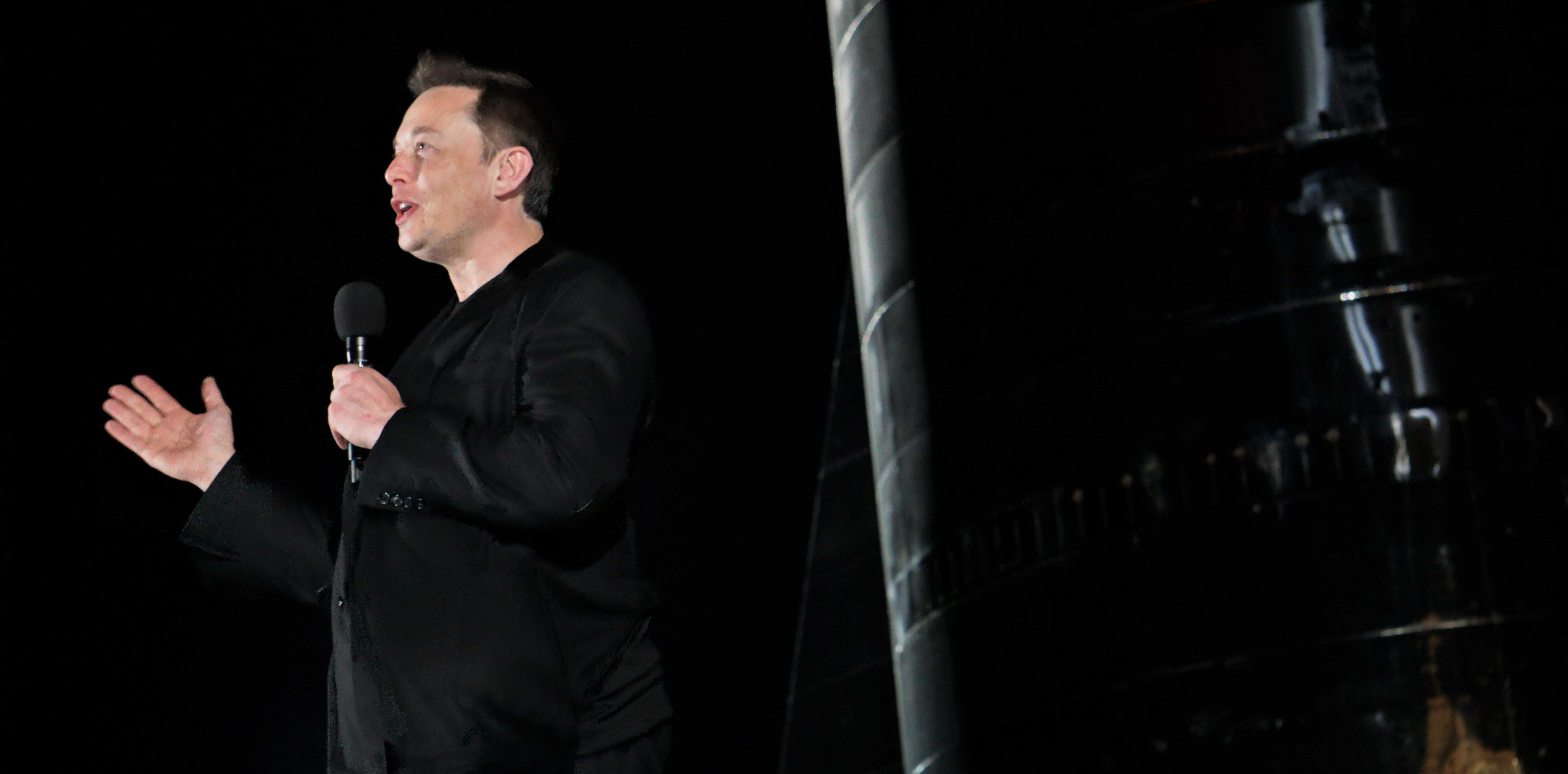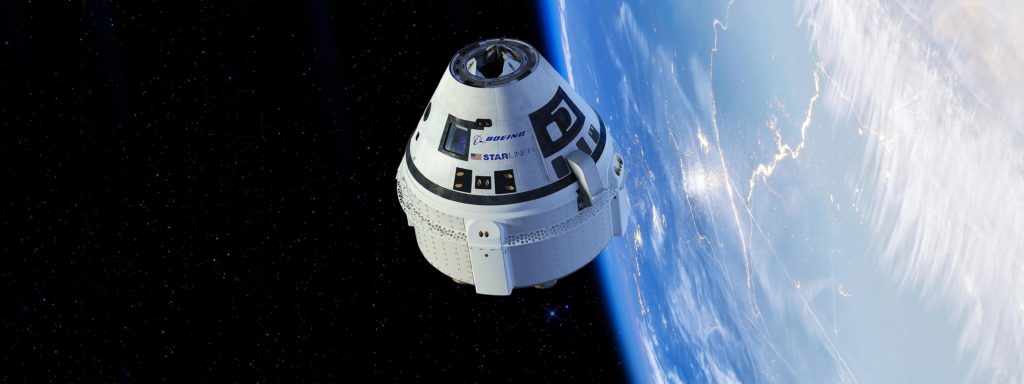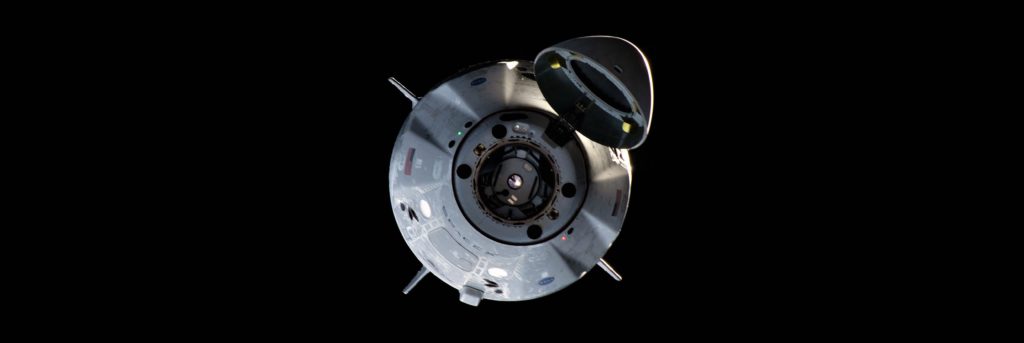

News
NASA head calls out SpaceX CEO Elon Musk over Starship event in bizarre statement
Roughly 24 hours before SpaceX CEO Elon Musk was scheduled to present an update on the company’s Starship launch vehicle development, NASA administrator Jim Bridenstine tweeted a bizarre and wholly unprovoked statement on the subject.
Seemingly equating SpaceX’s recent Crew Dragon delays with the distribution of Elon Musk’s public attention, the NASA administrator’s comment was almost universally criticized by the spaceflight community at large – and rightfully so.
First, some context. Created in 2010 and first supported with serious funding some 12-24 months later, NASA’s Commercial Crew Program (CCP) exists to replace the astronaut transport capabilities once offered by Space Shuttle and now achieved with contracts for seats on Russian Soyuz launches. Primarily the result of inept bureaucracy in NASA and Congress, the Space Shuttle was “retired” in 2011 in full knowledge that the US would have to rely on Russia to get NASA astronauts to the ISS until 2015 (at the absolute earliest).
Congress shut down multiple 2010 proposals to continue Shuttle flights until the late 2010s, choosing instead to kill the Shuttle and divert its associated funding to the expendable Ares V rocket (now the Space Launch System, SLS) and Orion crew capsule. More on that later...
Retweeted by Bridenstine’s official Twitter account, above is the absolute best-case interpretation of the NASA administrator’s comment. Although Eric Berger means well, the interpretation gives NASA far too much credit. Specifically, Bridenstine (or whoever fed him the statement) went out of his way to make it entirely one-sided in its focus on SpaceX. By all appearances, it would have never been posted if not for Elon Musk’s plans to present on Starship. Bridenstine additionally notes that “Commercial Crew is years behind schedule” and indicates that “NASA expects to see the same level of enthusiasm focused on [its] investments”.
Altogether, it’s simply impossible to interpret it as anything less than Bridenstine scolding SpaceX – and SpaceX alone – for not falling to the floor, kissing NASA’s feet, and pretending that Crew Dragon and Falcon 9 are the only things in existence. Absent from Bridenstine’s criticism was NASA’s other (and even more delay-complicit) Commercial Crew Partner, Boeing, who has yet to complete a pad abort or orbital flight test of its Starliner spacecraft. SpaceX completed Crew Dragon’s pad abort in 2015 and completed a flawless orbital flight test in March 2019.


In essence, Bridenstine is publicly implying that SpaceX needs to stop being (or appearing to be) distracted by Starship and focus 100% on Crew Dragon. Boeing was not mentioned, despite being a minimum of six months behind SpaceX and dramatically more ‘distracted’ in the Bridenstine-style interpretation of the word. For reference, Boeing is a publicly-traded company with 150,000 employees, annual revenue of more than $100B, and a market cap of $206B. Boeing has 14 subsidiaries, a handful of which are involved in spaceflight, and has no less than one or two dozen products that are each more fiscally important to shareholders and board members than Starliner.
Compared to Boeing’s annual ~$100B revenue, the entirety of the Starliner development program – from the drawing board in 2010 to crewed, orbital spaceflight sometime in 2020 – is ~$4.8B. On the scale of corporate focus, Starliner has likely been a blip at most in 2019, with the company probably far more focused on the systematic organizational failures that lead to the deaths of hundreds of people in two near-identical 737 MAX crashes. Alas, NASA administrator Jim Bridenstine did not release a statement publicly implying that Boeing needs to devote the “same level of enthusiasm” to Starliner after the second fatal 737 MAX crash in March 2019. Nor did Bridenstine release a statement charging Boeing with a lack of focus after continuous reports of issues with the company’s KC-46 Pegasus tanker program, nor Boeing’s recent $9.2B US Air Force trainer jet contract, or myriad other corporate focuses.

On the other hand, as Musk noted in his relatively subtle September 28th responses to Bridenstine’s implicitly derisive comment, something like 50-80% of the entirety of SpaceX’s workforce and resources are focused on Crew Dragon, the Falcon 9 rockets that will launch it, or a combination of both. At present, Starship is – at most – a side project, even if its strategic importance to SpaceX is hard to exaggerate. The same is largely true for Starlink, SpaceX’s ambitious internet satellite constellation program. It may be true that Starship will eventually make Crew and Cargo Dragon (as well as Falcon 9 and Falcon Heavy) wholly redundant, but that is likely years away and SpaceX will support NASA – as it is contractually required to – for as long as the space agency has vested interest in using Crew Dragon.
At the same time, NASA has explicitly and publicly chosen to prioritize safety over schedule with the Commercial Crew Program, accepting the possibility of delays and cost overruns to ensure that SpaceX and Boeing can build the safest spacecraft possible.
In a September 28th interview with CNN, Musk bluntly noted that the hardware was – at this point in time – more or less ready for flight and will be on-site at SpaceX’s Pad 39A Florida launch site within the next two months. According to Musk, from then on, any additional launch delays can almost entirely be attributed to the paperwork and reviews NASA must complete before giving SpaceX the go-ahead. If Bridenstine wants SpaceX to launch astronauts sooner, one – and possibly the only – solution is to tackle the roadblocks created by NASA’s own self-enforced red tape. The question, then, is whether Bridenstine wants to cut away red tape that may (or may not) be there for good reason.
When the pot calls the kettle black
Detached from whining about a contractor’s CEO presenting about a non-NASA program, complaining about Commercial Crew delays is at least slightly more reasonable. Originally intended to launch as early as 2015, Congress systematically underfunded the Commercial Crew Program by more than 50% for over half a decade, dispersing $2.4B of the $5.8B NASA requested from 2011 to 2016. Unsurprisingly, this completely upended Boeing and SpaceX development schedules. By September 2014, SpaceX aimed to have Crew Dragon certified by NASA for astronaut transport before the end of 2017, but even then, NASA already saw that schedule as overly optimistic.
It would be another two years before Congress began to seriously fund Commercial Crew at its requested levels, beginning in FY2016. In response to Bridenstine, former NASA deputy administrator Lori Garver noted that over the ~5 years Congress consistently withheld hundreds of millions of dollars of critical funds from Commercial Crew, NASA’s SLS rocket and Orion spacecraft were just as consistently overfunded above and beyond their budget requests. From 2011 to 2016 alone, SLS and Orion programs requested $11B and received an incredible $16.3B (148%) from Congress, while Commercial Crew requested $5.8B and received $2.4B (41%).

Ironically, despite literally receiving almost seven times as much funding as Crew Dragon and Starliner, SLS and Orion are arguably just as – if not more – delayed than their commercial brethren. Originally intended to launch an uncrewed test flight in 2017, there is now little to no chance that that mission (known then as EM-1 and now as Artemis-1) will launch before 2022, a delay of roughly half a decade. The cost of the SLS/Orion program recently crested $30B, a figure likely to grow to ~$40B before it has conducted a single launch. Of that funding, approximately a third has gone to Boeing, the primary contractor responsible for NASA’s comically-delayed SLS Core Stage – the orange booster pictured above.
The Commercial Crew development program will likely cost NASA $8B total over 9-10 years and produce two clean-sheet, high-performance, (relatively) low-cost crewed spacecraft. After their demonstration launches are completed, NASA will transition to fixed-price service contracts with SpaceX and Boeing to routinely send astronauts to the ISS several times per year.
Put simply, if Bridenstine actually cared about defending “the investments of the American taxpayer” more than wielding their sanctity as a political weapon, he wouldn’t have folded like a house of cards at the slightest resistance to his attempts to cull SLS/Orion delays and cost overruns, and he certainly wouldn’t be wasting breath complaining about what SpaceX’s CEO is or isn’t talking about.
Check out Teslarati’s Marketplace! We offer Tesla accessories, including for the Tesla Cybertruck and Tesla Model 3.
News
Tesla UK sales see 14% year-over-year rebound in June: SMMT data
The SMMT stated that Tesla sales grew 14% year-over-year to 7,719 units in June 2025.

Tesla’s sales in the United Kingdom rose in June, climbing 14% year-over-year to 7,719 units, as per data from the Society of Motor Manufacturers and Traders (SMMT). The spike in the company’s sales coincided with the first deliveries of the updated Model Y last month.
Model Y deliveries support Tesla’s UK recovery
Tesla’s June performance marked one of its strongest months in the UK so far this year, with new Model Y deliveries contributing significantly to the company’s momentum.
While the SMMT listed Tesla with 7,719 deliveries in June, independent data from New AutoMotive suggested that the electric vehicle maker registered 7,891 units during the month instead. However, year-to-date figures for Tesla remain 2% down compared to 2024, as per a report from Reuters.
While Tesla made a strong showing in June, rivals are also growing. Chinese automaker BYD saw UK sales rise nearly fourfold to 2,498 units, while Ford posted the highest EV growth among major automakers, with a more than fourfold increase in the first half of 2025.
Overall, the UK’s battery electric vehicle (BEV) demand surged 39% to to 47,354 units last month, helping push total new car sales in the UK to 191,316 units, up 6.7% from the same period in 2024.
EV adoption accelerates, but concerns linger
June marked the best month for UK car sales since 2019, though the SMMT cautioned that growth in the electric vehicle sector remains heavily dependent on discounting and support programs. Still, one in four new vehicle buyers in June chose a battery electric vehicle.
SMMT Chief Executive Mike Hawes noted that despite strong BEV demand, sales levels are still below regulatory targets. “Further growth in sales, and the sector will rely on increased and improved charging facilities to boost mainstream electric vehicle adoption,” Hawes stated.
Also taking effect this week was a new US-UK trade deal, which lowers tariffs on UK car exports to the United States from 27.5% to 10%. The agreement could benefit UK-based EV producers aiming to expand across the country.
News
Tesla Model 3 ranks as the safest new car in Europe for 2025, per Euro NCAP tests
Despite being on the market longer than many of its rivals, the Tesla Model 3 continues to set the bar for vehicle safety.

The Tesla Model 3 has been named the safest new car on sale in 2025, according to the latest results from the Euro NCAP. Among 20 newly tested vehicles, the Model 3 emerged at the top of the list, scoring an impressive 359 out of 400 possible points across all major safety categories.
Tesla Model 3’s safety systems
Despite being on the market longer than many of its rivals, the Tesla Model 3 continues to set the bar for vehicle safety. Under Euro NCAP’s stricter 2025 testing protocols, the electric sedan earned 90% for adult occupant protection, 93% for child occupant protection, 89% for pedestrian protection, and 87% for its Safety Assist systems.
The updated Model 3 received particular praise for its advanced driver assistance features, including Tesla’s autonomous emergency braking (AEB) system, which performed well across various test scenarios. Its Intelligent Speed Assistance and child presence detection system were cited as noteworthy features as well, as per a WhatCar report.
Other notable safety features include the Model 3’s pedestrian-friendly pop-up hood and robust crash protection for both front and side collisions. Euro NCAP also highlighted the Model 3’s ability to detect vulnerable road users during complex maneuvers, such as turning across oncoming traffic.
Euro NCAP’s Autopilot caution
While the Model 3’s safety scores were impressive across the board, Euro NCAP did raise concerns about driver expectations of Tesla’s Autopilot system. The organization warned that some owners may overestimate the system’s capabilities, potentially leading to misuse or inattention behind the wheel. Even so, the Model 3 remained the highest-scoring vehicle tested under Euro NCAP’s updated criteria this year.
The Euro NCAP’s concerns are also quite interesting because Tesla’s Full Self-Driving (FSD) Supervised, which is arguably the company’s most robust safety suite, is not allowed for public rollout in Europe yet. FSD Supervised would allow the Model 3 to navigate inner city streets with only minimal human supervision.
Other top scorers included the Volkswagen ID.7, Polestar 3, and Geely EX5, but none matched the Model 3’s total score or consistency across categories. A total of 14 out of 20 newly tested cars earned five stars, while several models, including the Kia EV3, MG ZS, and Renault 5, fell short of the top rating.
Elon Musk
Why Tesla’s Q3 could be one of its biggest quarters in history
Tesla could stand to benefit from the removal of the $7,500 EV tax credit at the end of Q3.

Tesla has gotten off to a slow start in 2025, as the first half of the year has not been one to remember from a delivery perspective.
However, Q3 could end up being one of the best the company has had in history, with the United States potentially being a major contributor to what might reverse a slow start to the year.
Earlier today, the United States’ House of Representatives officially passed President Trump’s “Big Beautiful Bill,” after it made its way through the Senate earlier this week. The bill will head to President Trump, as he looks to sign it before his July 4 deadline.
The Bill will effectively bring closure to the $7,500 EV tax credit, which will end on September 30, 2025. This means, over the next three months in the United States, those who are looking to buy an EV will have their last chance to take advantage of the credit. EVs will then be, for most people, $7,500 more expensive, in essence.
The tax credit is available to any single filer who makes under $150,000 per year, $225,000 a year to a head of household, and $300,000 to couples filing jointly.
Ending the tax credit was expected with the Trump administration, as his policies have leaned significantly toward reliance on fossil fuels, ending what he calls an “EV mandate.” He has used this phrase several times in disagreements with Tesla CEO Elon Musk.
Nevertheless, those who have been on the fence about buying a Tesla, or any EV, for that matter, will have some decisions to make in the next three months. While all companies will stand to benefit from this time crunch, Tesla could be the true winner because of its sheer volume.
If things are done correctly, meaning if Tesla can also offer incentives like 0% APR, special pricing on leasing or financing, or other advantages (like free Red, White, and Blue for a short period of time in celebration of Independence Day), it could see some real volume in sales this quarter.
You can now buy a Tesla in Red, White, and Blue for free until July 14 https://t.co/iAwhaRFOH0
— TESLARATI (@Teslarati) July 3, 2025
Tesla is just a shade under 721,000 deliveries for the year, so it’s on pace for roughly 1.4 million for 2025. This would be a decrease from the 1.8 million cars it delivered in each of the last two years. Traditionally, the second half of the year has produced Tesla’s strongest quarters. Its top three quarters in terms of deliveries are Q4 2024 with 495,570 vehicles, Q4 2023 with 484,507 vehicles, and Q3 2024 with 462,890 vehicles.
-

 Elon Musk4 days ago
Elon Musk4 days agoTesla investors will be shocked by Jim Cramer’s latest assessment
-

 News1 week ago
News1 week agoTesla Robotaxi’s biggest challenge seems to be this one thing
-

 Elon Musk2 weeks ago
Elon Musk2 weeks agoFirst Look at Tesla’s Robotaxi App: features, design, and more
-

 News2 weeks ago
News2 weeks agoSpaceX and Elon Musk share insights on Starship Ship 36’s RUD
-

 News2 weeks ago
News2 weeks agoWatch Tesla’s first driverless public Robotaxi rides in Texas
-

 News1 week ago
News1 week agoWatch the first true Tesla Robotaxi intervention by safety monitor
-

 News2 weeks ago
News2 weeks agoTesla has started rolling out initial round of Robotaxi invites
-

 Elon Musk2 weeks ago
Elon Musk2 weeks agoTesla to launch in India in July with vehicles already arriving: report

















